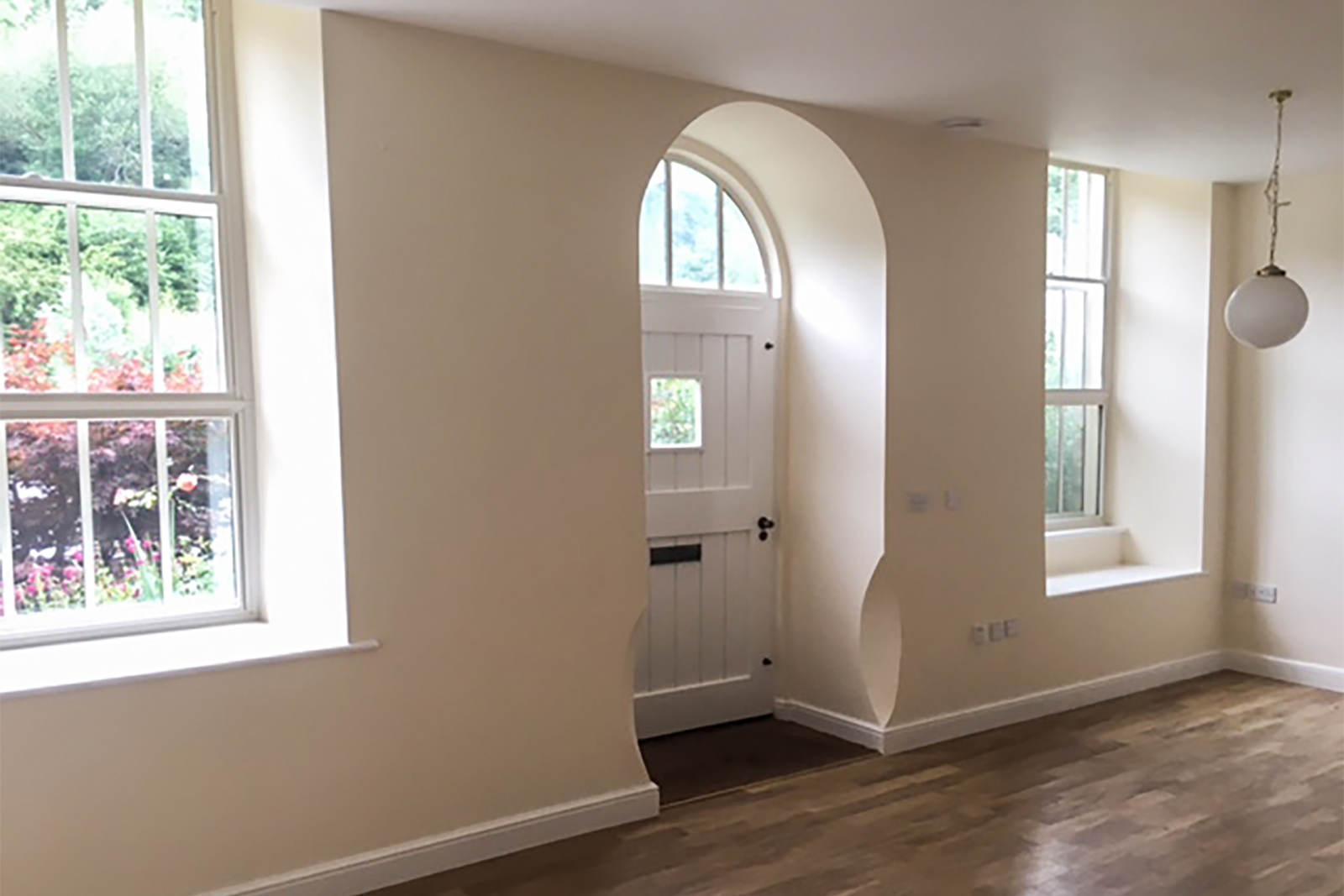Domestic Flats, Stroud – Removing Mould & Fixing Rising Damp

This ground floor flat is part of a four-storey block in the Stroud area. The building dates back to the mid-18th century. It was originally part of a mill, which, in various different configurations, had been operating all the way back in the 13th century. In the early 2000s the building was converted into a block of domestic flats.
The Problem
The hall area near the front door of the property was very exposed to the elements. The property owner was reporting multiple damp patches on the walls and large amounts of black mould growth around window and door frames.
Damp expert Chris Debieux, the Director of Damp and Decay Direct Ltd, was called-in to survey the problem. He found that there were multiple sources of dampness and the wall was highly contaminated with hygroscopic salts. Due to the age of the property, it was built without a DPC. A chemical DPC had previously been installed but, due to improper materials and poor application, it had failed. This had led to the presence of rising damp.
The presence of hygroscopic salts in the wall, as a consequence of rising damp, meant that the surface of the wall was damper and colder than it would normally be. This exacerbated condensation issues around the window frames, leading to black mould growth. This was made even worse by the fact that no insulation had been installed in the ceiling void during the building’s conversion to domestic flats.
The Solution
The first step taken to solve the problem was to install an effective DPC. Dryzone Damp-Proofing Cream was chosen because of its BBA-tested and approved performance. The cream was injected into holes that were drilled at regular intervals along a horizontal mortar course on the exterior side of the wall. Once installed, Dryzone Damp-Proofing Cream diffused along the mortar course and cured to form a damp-proof barrier.

Once the initial damp-proofing renovations were completed, it was necessary to replaster the salt-contaminated walls. Oldroyd Xp Plaster Membrane was chosen as the main way to stop the new plaster coat from being contaminated by the salts that were still left in the wall. It is a waterproof plastic 6 mm studded membrane with a mesh on the front for the direct application of plaster. The membrane is held on the wall using flat-faced plugs.

Certain sections of the wall around the door and windows were of an irregular shape. For these sections, Drybase Flex was chosen as the best solution. It is a highly flexible damp and salt-proof fleeced membrane system. The Drybase Flex Membrane is easily applied to arches and irregular-shaped recesses using the trowel-applied Drybase Flex Adesive. Chris explains, “Drybase Flex is brilliant for retaining curves and shapes that are often characteristic of older buildings, that’s why I specifically chose this system”
.

He “dot & dabbed” plasterboard onto the Oldroyd Xp Plaster Membrane and then applied a coat of hardwall plaster directly to the Drybase Flex Sections before dubbing out and marrying the whole surface together using bonding coat. Finally, the wall was decorated using Dryzone Mould-Resistant Emulsion Paint, which prevents mould growth in areas that are susceptible to condensation issues, even in areas where extra ventilation or heat cannot be provided. The customer can now relax in their damp, salt and mould-free home.


